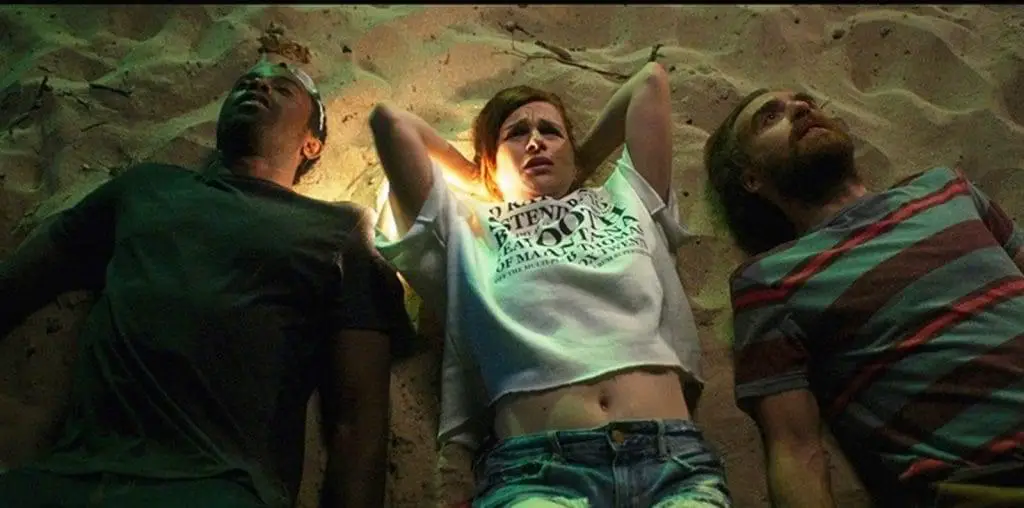
BOOTLEG FILES 294: “Muscle Video Journal” (1983-1995 series of video magazines covering U.S. bodybuilding)
LAST SEEN: Segments of various episodes can be found on YouTube.
AMERICAN HOME VIDEO: On VHS from the now-defunct Video Action Inc.
REASON FOR BOOTLEG STATUS: The production company is out of business.
CHANCES OF SEEING A COMMERCIAL DVD RELEASE: Not likely.
Bodybuilding has never been taken seriously by the mainstream media – and, quite frankly, it is not difficult to understand why, given the extremes required by this sport. Although a very small number of bodybuilders have been able to find recognition in the wider world – most notably Mickey Hargitay and Steve Reeves in the 1950s and Arnold Schwarzenegger and Lou Ferrigno in the 1970s – the vast majority of participants in this endeavor remain totally unknown to an apathetic general public.
Not unlike any fringe activity, bodybuilding has generated its own media to offer the coverage that the general press has withheld. Magazines and web sites devoted to the muscular stars and the secrets of their success attract a devoted cult following. But during the 1980s and early 1990s, a strange hybrid media outlet emerged that sought to go beyond the static one-dimensionality of printed media and offer the opportunity to enjoy walking, talking, and flexing bodybuilders.
The production was called “Muscle Video Journal,” and it existed as a one-hour video magazine that appeared four times a year. Beginning in 1983 and running through 1995, 49 editions of “Muscle Video Journal” were produced. Considering this was an independent endeavor that was not associated with any of the governing organizations of the sport, the fact “Muscle Video Journal” lasted 12 years was no mean feat.
“Muscle Video Journal” was created by a company called Video Action Inc., which was based in Jersey City, N.J. No information is available regarding how or why the idea for a video magazine series on bodybuilding came about, so the genesis of this production is (at least for the moment) something of a mystery.
Each edition of “Muscle Video Journal” consisted of an average of 10 segments, running from four to six minutes each. Most of the segments were interviews with bodybuilders, though sometimes there would be footage of a bodybuilding competition where an off-screen narrator offered a thumbnail rundown of the tournament winners. The interviews took place either backstage at the competitions or at gyms where the bodybuilders trained.
Looking at episodes of “Muscle Video Journal” today, it is somewhat astonishing that it existed beyond one episode. Rarely has something been marketed as a professional video with such atrociously tacky production values – in every episode, “Muscle Video Journal” comes across as a bulked up public access happening. For those used to the slick professionalism of ESPN or even WWE smackdowns, “Muscle Video Journal” is frequently a source for unintentional laughs.
Lighting for the episodes varies widely from segment to segment: sometimes the gym settings are adequately illuminated, but often the lights are poorly positioned to the point that the sequences are too dark or too bright. No one bothered to use facial or body make-up for these segments, and this was especially problematic when the bodybuilders rubbed oil on their muscles for the flexing segments. Under the glare of too-close lights, the oiled-up athletes literally shined like automobiles newly emerged from a car wash.
Some of this bumbling might have been overlooked if there was a genuine heft to the interviews in each episode. However, “Muscle Video Journal” also boasts some of the least compelling conversations ever put on videotape. Someone named Carl Pirelli served as the series’ roving reporter, though his monotonous presence and fumbling interviewing skills suggested that he had minimal experience in conversation, let alone broadcast journalism. Pirelli’s questions focused almost entirely on the fundamentals of workout routines – obvious inquiries involving diet, the financial aspects of training and participating, and steroid usage were never raised.
But even if Pirelli was the Mike Wallace of the gym set, his subjects were rarely raconteur material. It is ironic that guys who had no problem lifting hundreds of pounds had problems carrying a conversation. But, then again, we have to consider that many of these athletes had no previous training in media relations and were probably being interviewed for the first time.
The interviews usually began with Pirelli and one of the bodybuilders standing next to each other in an awkward pairing. After a minute together, the camera would cut to the bodybuilder at the gym. Pirelli’s Q&A would run on the soundtrack while the bodybuilder went through the motions of working out for the camera. Inevitably, the Q&A would stop and some hideous, generic Muzak-style instrumentals would play in accompaniment of the exercising. More nuttiness came by not having the music coincide with any of the physical effort, thus creating a warped audio-visual schism.
Many of the big guys were clearly uncomfortable with being on videotaped while exercising, and they would shoot nervous glances at the camera while lifting barbells or pushing on the weight machines. Others, though, were big hams and would barely conceal their grinning satisfaction of showing off. Oddly, no one ever stopped to offer a point-by-point instruction of how to use the weights properly or to build specific body parts – it was literally a bunch of large men lifting weights, with bad music wafting around.
Some of the “Muscle Video Journal” episodes were hodgepodges where the guest line-up had no rhyme or reason. Later in the series’ run, cohesive themes such as “Heavyweights,” “Light Heavyweights,” “Teen Edition,” “Fresh Faces” (for the truly unknowns), and “All-Star Edition” would package the beef with some degree of coherence.
As an on-the-cheap endeavor, “Muscle Video Journal” stuck solely to U.S. bodybuilders. If anyone was building muscle elsewhere in the world, the series didn’t know or care. And with a couple of segment exceptions, the focus of all episodes was strictly male bodybuilders. If the gals wanted to grow bulky biceps, “Muscle Video Journal” didn’t give a damn.
Despite the silliness, “Muscle Video Journal” managed to snag interviews with many of the prominent bodybuilding stars of the 1980s and 1990s. Most of the names won’t mean anything to those unfamiliar with bodybuilding, but those who know something of the sport will recognize the likes of Kevin Leverone, Porter Cortrell, Dennis Newman, Jimmy Mentis, Jim Quinn, Matt Mendenhall, Dean Caputo, Danny Hester, Abbas Khatami, Gerard Dente, Jeramy Freeman, Paul DeMayo, Mike Francois, Franco Santoriello, and Mike Matarazzo in the mix. Actually, one bodybuilder featured in the series managed to find fame in another sport: a young Phil Baroni, who would grow up and grow out to become a UFC champion, turned up in the 49th and final episode, which highlighted teenage bodybuilders.
“Muscle Video Journal” was released quarterly at a retail price of $39.95. This was in the pre-DVD days, so the VHS videos were shipped in bulky clamshell packages. It was not available in stores, but could be purchased via mail order advertising. Advertisements in the bodybuilding media were obvious, but the company apparently sought out those with more than an academic interest in bodybuilding: some advertisements ran in The Advocate, a gay interest magazine. (There is no evidence that advertisements were placed in women’s interest magazines.)
It must have been a successful effort, since Video Action Inc. kept “Muscle Video Journal” running for 12 years. The company also produced a number of other videos relating to bodybuilding, including filmed records of championship tournaments. It all stopped in 1996, and nothing further was heard from Video Action Inc.
As an out-of-print VHS title that was never transferred to DVD, “Muscle Video Journal” achieved something of a collector status among bodybuilding fans. Old videos turn up on eBay and fetch surprisingly high prices, which is interesting considering the loathing for VHS by many people. For those who don’t feel like spending money on this stuff, plenty of gym-happy bootleggers have grabbed segments from various episodes for posting on YouTube. Running a search of “Muscle Video Journal” or “MVJ bodybuilding” will call up dozens of tacky old clips. I don’t know who owns the copyright to the series, but they are clearly losing money thanks to those jolly YouTube pirates.
While watching a full one-hour episode of “Muscle Video Journal” is no one’s idea of fun, catching the various individual segments via YouTube is easier to endure. For those with no interest in bodybuilding, these segments can either be seen as retro silliness (the 80s hairstyles were particularly inane) or just plain nuts (you wind up knowing absolutely nothing about the bodybuilders after spending time with time). For those who take their iron pumping seriously, however, these bootlegged presentations help keep a long-gone pioneer in bodybuilding media alive forever.
IMPORTANT NOTICE: The unauthorized duplication and distribution of copyright-protected material, either for crass commercial purposes or profit-free s***s and giggles, is not something that the entertainment industry appreciates. On occasion, law enforcement personnel boost their arrest quotas by collaring cheery cinephiles engaged in such activities. So if you are going to copy and distribute bootleg videos and DVDs, a word to the wise: don’t get caught. Oddly, the purchase and ownership of bootleg videos is perfectly legal. Go figure!


I was on the cover and the back of muscle video journal new faces of the mens nationals 1992. The same year Mike Fransis won the over all. Since Im on tthe cover and have a nice interview segment I would like to attain a copy if at all possible as mine were ruined by water damage and no longer playable or recognizable.
Bob Brennan will Muscle Video Journal come back again?
As the creater of Muscle Video Journal I read with great interest your article about Muscle Video Journals. It was a well written article with many clever lines. MVJ was a great experience. I’m glad it lives on YouTube.